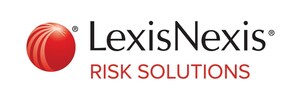ATLANTA, Nov. 17, 2016 /PRNewswire/ -- Small Business financial inclusion, which hinges on lending practices established by financial institutions, is important to the long-term economic growth of our country. When small businesses have access to the financial system, they can secure credit that enables them to expand their company, innovate new products, and create more jobs; yet, the financial system many times excludes countless small businesses partly because they have no credit history or a very thin credit history file. Lenders understandably tend to shy away because the lack of financial insights about these companies could mean heightened risk. The irony is that most small businesses that fall into this category are actually very good credit candidates.
Testing has shown that a small business' traditional credit payment history is very predictive of its future credit risk. However, many small businesses do not have a credit payment history, so lenders that only use traditional means to assess risk don't have the insight necessary to bring these companies into the financial system. Small businesses understand the important role credit plays in growing their business and lenders understand the value and stability small businesses bring to their portfolios; yet, there is a chasm. Ben Cutler, senior director, small business credit risk decisioning, LexisNexis Risk Solutions, sat down with us recently to discuss how this chasm can be closed so that small businesses and lenders benefit.
Cutler answered the four most pressing questions lenders ask when it comes to including more small businesses in the financial system.
LNRS: How can lenders expand their addressable small business market?
Cutler: That is the number one question lenders ask us today. When it comes to increasing the pool of small businesses to lend to, many institutions are pulling only two levers: the first is brute-force marketing to attract more small business applicants, and the second is loosening their lending criteria. The problem is that when it comes to small business credit risk decisioning, there is an information blind spot and these two levers cause lenders to pass on many well-deserving small business lending candidates.
These levers do not address the real issue: many banks really do not have a small business loan application problem. Most lenders experience a deluge of small businesses that apply for a credit card, in fact. What lenders really want is a better way to more effectively risk assess their current small business applicants so that they are expanding their "decisionable" market along with their addressable market.
The good news is lenders are coming to grips with this reality. The most competitive lenders are implementing credit risk decisioning methods that shine a light on the blind spot so that they have deeper insight to potential candidates.
LNRS: Describe these potential candidates in more detail.
Cutler: If a new small business has a credit report, it is probably very thin. It may have one trade line, for example. If a small business is a thin- or no-file, many lenders struggle to assess accurately the risk of whether the small business will be able to pay back the working capital line of credit or the small business credit card. Nevertheless, these small businesses actually leave a trail of "data footprints" outside of traditional credit data that can be used to assess accurately their credit risk. When a lender is able to review a small business credit report that was built with trade line data AND other data sources—e.g., authorized representative data, address stability data, owner-occupied real estate data, business license information filed with a state, and asset data, like whether the small business owns a fleet of trucks—a fuller and more accurate picture of that small business emerges. The lender is able to expand its addressable market with confidence that it isn't introducing additional risk, while at the same time more small businesses can be included in the financial system so that they have access to funds needed for hiring and product development.
Therefore, the best way for a lender to expand its small business addressable market is to rely on small business credit scores and small business credit reports built with proven alternative-data statistical models.
LNRS: How can lenders effectively segment small business credit risk?
Cutler: Lenders tell us that they want to be able to differentiate small businesses, which is difficult to do when many of these companies have very thin traditional credit data files or in some cases no traditional credit data file at all. If looking at credit data alone, small businesses start to look the same when credit risk information is too thin. A seasoned lender intuitively knows that the local yard maintenance company that has been in business for four years is different from the plumbing business starting up. However, when the credit data is nonexistent or too thin, a lender cannot differentiate the risk both companies could potentially pose. What ends up happening is the company cannot get the right credit product and is excluded from the financial system.
The lenders that are most competitive in the small business space are using alternative data to thicken the thin files so that they can appropriately segment their risk. By combining the "data footprints" that small businesses leave behind (mentioned above) and the insights on their owners, lenders are able to have better insight into the profile of companies and achieve better small business risk segmentation than ever before.
Linking these data footprints is a critical success factor. Our studies show this data reveals a small business up to five years before it has a traditional credit profile. That fact should grab lender attention. It's a competitive advantage for a lender to use small business credit scores and small business credit reports that leverage alternative data. Lenders can segment risk more accurately and stimulate small business financial inclusion. We've observed that small businesses tend to be very loyal to lenders that loan to them, especially when a small business in the early stages of its lifecycle.
At its core, the insights these data footprints can provide are rather intuitive. For example, is the company real (e.g., is it present in trustworthy government sources: Secretary of State, IRS, etc.? Is it present in more than one source, because two dots make a line? How long have we seen it? What is the length of time on file?)? Is the company stable (e.g., is it in good standing with government sources? What is the length of time at an address? How many locations? And what is the location type? What is the business type [e.g., franchises]?)? Does it appear able to repay (e.g., does it own property or assets? Is the collateral already pledged on a UCC? What is the asset profile of the owner/authorized representative?)? Has the company shown it is willing to repay (e.g., are there traditional negative public records like bankruptcy, judgements, and liens? What is the time since a derogatory experience? Is there a derogatory track-record with the associated people?)? Finally, it is reputable (e.g., is it present on OFAC or other watch-lists? Are there sanctions? Or is there unfavorable news?)? While many of these elements are intuitive, the power is in aggregating data from thousands of sources to build the broadest foundation (you don't want to miss anything), then resolving the data into specific entities to yield a precise view on a small business (you don't want to mistakingly mis-link anything).
It's important to remember that testing has shown small business traditional credit payment history is very predictive of future credit risk. We not only combine business and consumer data but we also blend payment performance data from the Small Business Financial Exchange, Inc. (SBFE®) so that lenders have the deepest possible view into a small business. Combining all of these sources, we see 60 percent more business profiles on which a lender can make a solid credit decision; and, perhaps even more critical, we experience a 40 percent improvement in segmentation of applications at lower tranches of the scoring tiers.
Lenders need to know that alternative data increases segmentation across risk bands by analyzing positive versus negative data profiles, especially for new and thin-file businesses.
LNRS: How can lenders identify the people associated with a business?
Cutler: A common phrase in the industry is that a small business is the person behind the business. While obviously true for millions of sole proprietorship and micro-businesses, this also holds true for small businesses that have incorporated. Unsurprisingly, many small business owners will admit to blending their personal and business affairs, like funding the business with personal funds, operating from a home address, securing business assets in a personal name, and more. Our testing reveals compelling reasons why lenders must understand this business-to-person connection: for example, 1 in 3 small businesses has a derogatory event associated with it or with its owner/authorized representative (e.g., a bankruptcy or lien, foreclosure or felony). The alternative data footprints described above are critical to reveal these connections and enable risk assessment on the small business and the person(s) connected to that business.
If you want to bring more small businesses into your institution without introducing additional risk, please reach Ben Cutler at [email protected].
About LexisNexis® Risk Solutions
LexisNexis Risk Solutions is a leader in providing essential information that helps customers across industries and government predict, assess and manage risk. Combining cutting-edge technology, unique data and advanced analytics, LexisNexis Risk Solutions provides products and services that address evolving client needs in the risk sector while upholding the highest standards of security and privacy. LexisNexis Risk Solutions is part of RELX Group plc, a world-leading provider of information and analytics for professional and business customers across industries. http://www.lexisnexis.com/risk/
Logo - http://photos.prnewswire.com/prnh/20160120/324390LOGO
SOURCE LexisNexis Risk Solutions
Related Links
WANT YOUR COMPANY'S NEWS FEATURED ON PRNEWSWIRE.COM?
Newsrooms &
Influencers
Digital Media
Outlets
Journalists
Opted In




Share this article